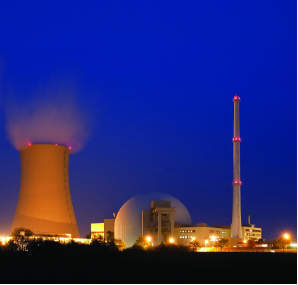
The reaction to the March 2011 accident at Fukushima Daiichi in Japan continued to dominate the nuclear industry throughout 2012. Upgrades to improve safety are underway or planned at many reactors around the world, and are typically expected to be completed in a few years. Despite this, so far the effect of Fukushima on nuclear plant performance remains largely confined to Japan.
For example, looking at the world as a whole, the 400 (373.9 GW) units listed in our table generated 2317 TWh of electricity in 2012, representing a decrease of over 7% on the 2500 TWh generated in 2011. If we exclude the data from Japan, where 42 of the 50 units generated no electricity at all in 2012, there was only a small drop in generation of 25 TWh (~1%) compared with 2011, and this is well within normal fluctuations.
The average load factor for all reactors in 2012 fell to 69.9% from 77.0% in 2011. But again, if the Japanese units are excluded the load factors were similar (81.3% in 2011 and 80.1% in 2012), although there was still a slight fall in performance. Average load factors calculated for the main reactor types also declined year-on-year, with the exception of pressurized water reactors (PHWRs), whose load factor increased from 72.8% in 2011 to 74.6% in 2012. This increase could be in part thanks to the restart of Bruce 1&2 and Point Lepreau in Canada, all of which returned to the grid at the end of 2012 after extensive refurbishments.
Together the 400 units listed in our tables had generated a total of 64,506 TWh during their 11,200 years of operation, achieving a mean lifetime load factor of almost 73.0%. The average lifetime load factor for all reactors has remained almost constant for the last three years, increasing slightly from 72.7% in 2010, to 73.0% in 2011, and remained at that level in 2012.
For nine of the 18 countries with four or more operating reactors, the average annual load factor increased from 2011 to 2012. It declined in the rest. Other than Japan (whose 2010 average annual load factor was 69.5%), Belgium and South Korea were two countries whose 2012 average load factors fell noticeably from 2011, because of various component issues.
| Unit | Country | Load factor (%) |
|---|---|---|
| Quad Cities 1 | USA | 105.0 |
| Dresden 2 | USA | 103.7 |
| Kuosheng 2 | Taiwan | 101.8 |
| Unit | Country | Lifetime generation (TWh) |
|---|---|---|
| Grohnde | Germany | 315.7 |
| Grafenrheinfeld | Germany | 308.2 |
| Philippsburg 2 | Germany | 306.1 |
| Unit | Country | Lifetime load factor (%) |
|---|---|---|
| Wolsong 4 | South Korea | 93.7 |
| Wolsong 3 | South Korea | 93.4 |
| Emsland | Germany | 93.1 |
| Unit | Country | Equivalent full power years of operation |
|---|---|---|
| Ginna | USA | 39.3 |
| Beznau 1 | Switzerland | 36.5 |
| Beznau 2 | Switzerland | 36.1 |
For access to the full load factor league tables please subscribe to Nuclear Engineering International






